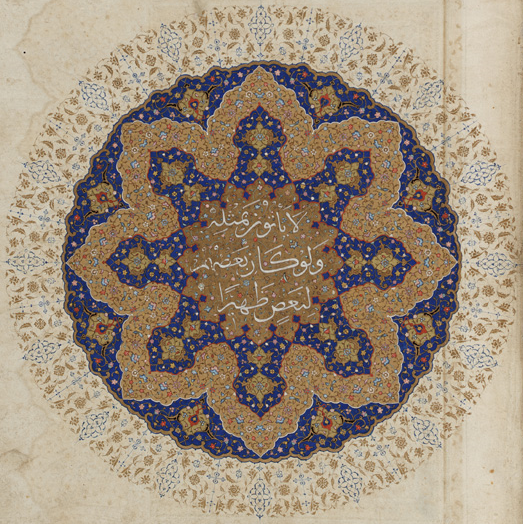
What are we teaching our sons?
The Guardian recently published an article by Nadiya Takolia titled “The hijab has liberated me from society’s expectations of women.” It’s far from the first of its kind; indeed, the Muslim feminist blogosphere is really sick of talking about whether or not the hijab is inherently oppressive. Yessenia at Queereka has already articulated many of the points that I would make about the article.
Before I go any further, I want to promote the following insightful stories from an ex-Muslimah and a current Muslimah about their experiences (and their daughters’) with hijab. These are both excellent blogs to follow, and I’m sure we’ll hear more from both of them about religious expectations of female modesty in the future. The first part of my response to Takolia’s article in the Guardian is after the jump.
A Sober Second Look:
- Learning to Wear “Good Hijab“
- Hijab, “Empowerment” and “choice” – The Sunny Side
- Hijab, “Empowerment” and “choice” – The Darker Side
- Hijab and Our Daughters
- Hijab and Our Daughters II
Azizatu Nafsiha
As a former Christian fundamentalist raised with an apostolic “holiness” dress code, I’ve watched Western feminist debates about the hijab with interest and, often, with intense frustration. The religious argument for covering up is deeply familiar to me: it’s about honoring God, helping others, protecting purity and privacy, and so on. As much as some members of the global Muslim community would like to claim a cultural patent to various forms of dress (the hijab, niqab, burqa, abaya, etc.), the fact is, covering women’s bodies for religion is a traditional component of all three “religions of the book.” Christians, too, claim that their long denim skirts are there not only for modesty, but also to “witness” to the world. Covering up women is a very shaky basis for claims to cultural autonomy. On the other hand, the naive readiness with which the Western media laps up their claims about “religious freedom,” “choice,” “empowerment,” and “cultural pride” makes me violently ill. “It’s a matter of choice” is so far from adequate that I hardly know where to start. But I’ll try:
The most irritating thing about following modesty debates that concern Islam or Judaism is the extent to which Western journalists insist that modesty policing is a “foreign” problem. They frame instances of modesty policing in North America and Europe as the tentacles of the benighted Middle East groping their way into the rougher sides of enlightened white cities. This exoticizing approach helps no one, and actually helps to popularize and promote the kinds of practices it codes as “Other.” How?
- It blinds liberal white Christians to the fundamentalism and modesty policing in their own midst: extremist Christians like the Duggars, the Amish, the Message, and the evangelical circles of Bill Gothard, Vision Forum and James Dobson are praised as “quaint,” “wholesome,” and “old-fashioned,” whereas Muslims or Jews with identical practices are labeled “militant,” “backward,” and “dangerous.” We cannot afford to think about modesty policing as a regional, cultural or ethnic problem, because to do so is to privilege a worldview in which Christians can do no harm.
- It enables a “resistance” discourse in which Muslims and Jews are able to defend their modesty policing as “preserving their culture and identity,” two spheres that are sacrosanct to liberal constitutional democracies. I frequently encounter modesty apologists arguing that the hijab is not a religious symbol (as Takolia herself writes), but rather an expression of an empowering Muslim (sometimes Arab) identity. This discourse enables innately discriminatory practices (the policing of female bodies in public spaces) to acquire an aura of legitimation, and makes it easy to silence critics of those practices by calling them Islamophobes or anti-Semites.
- It perpetuates the myth that Western Muslim or Jewish women are either lacking agency (as new immigrants unaware of their freedoms) or are completely free (as Western-born or educated women who choose to wear hijab or practice tzniut). This is related to my first point: it reflects an assumption that it is impossible to be anything but completely free in North America or Europe. Having grown up in the evangelical bubble of purity balls, stay-at-home daughters, and “Ladies Against Feminism,” I know this to be flat-out wrong. I had “true freedom in Christ,” but heaven help me if I tried to pierce my ears or buy a CD that wasn’t church-sanctioned.
- It misunderstands how power operates in modesty discourses. The Western media hears “burqa” and immediately looks for a controlling husband. It hears about Orthodox Jewish girls being bullied for “immodesty” and whips out the “traditional culture” line from its belt of excuses. In other words, modesty policing is framed as either something that’s old and dying out with the elderly generation (totally overlooking how the Millennial generation is, by and large, more conservative than its predecessor), or it’s blatant coercion by Men In Charge. These narratives are almost never true. Modesty policing is almost always done by women to themselves or to other women and girls.
- Let’s not forget that it’s just basically racist and wrong to argue that misogyny only comes from non-white, non-Christian men.
Framing the modesty doctrine as a “foreign” problem, in other words, excuses Christian fundamentalists and allows secular Western people to hold onto their ethnocentric biases. Without rehashing the harm that the modesty doctrine does, I want to point out a comment by Rabbi Tzadok Elkohen on hyper-tznius (modesty). In response to a comment that made tznius comparable to anorexia, the Rabbi wrote:
The anorexia comparison may be incredibly apt, though not in the manner which you are speaking. The best research, and conversely the best treatment modalities, for anorexia see it as form of gradual suicide. The affected person feels that they have no right to occupy space, and thus seek to decrease the amount of space they occupy, until a very unfortunate end. So there are some extreme self esteem issues.
Again it is hard to say, without an extensive study done into the psychology, but it is quite possible that those same essential issues are manifesting themselves here in an only slightly less destructive manner. Again where the women have come to a powerful internal conclusion that they have no right to be seen or heard, and thus essentially attempt to disappear in plain sight.
As someone who actually was anorexic while living under Christian modesty teachings, this is exactly what occurred. I even recall a church member telling me to turn sideways and then asking me, “Where’d you go?” His remark sticks with me because of the ambivalence I felt: it was good to be able to hide, but I didn’t just want to puff out of existence. And yet, nonexistence was at the same time exactly what I was aiming for: to be able to walk under the radar of all-seeing lustful male eye. I wanted my body to be invisible.
In my next post, I’ll assess Takolia’s claim that the hijab is capable of liberating any woman from objectification.











